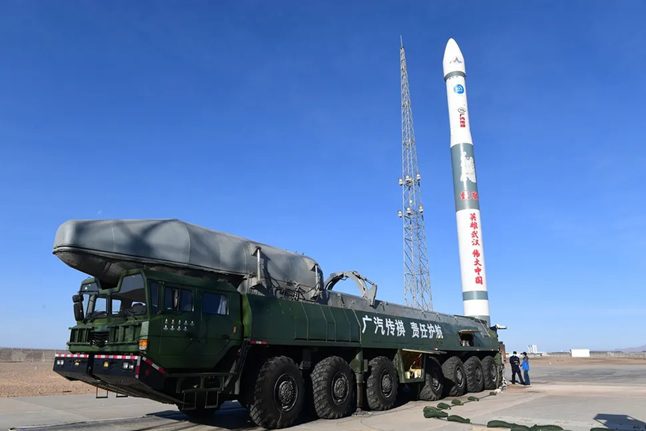NASA’s Space Launch System has been much derided by critics, and yet it seems to sail serenely on, passing its Critical Design Review and with construction already begun. David Todd reports on the next steps in building this new super-heavy lift launch vehicle which may have a surprising new engine aboard.
SLS – how it came about
From the ashes of NASA’s cancelled Project Constellation, which was deemed by the White House-appointed Augustine Commission to be “fundamentally un-executable” under the funding limits then applied, there were two notable survivors. They survived in spite of the wishes of the White House and NASA’s leadership, rather than because of them. One of these was, of course, the Orion space capsule – an excellent Lockheed-Martin-built design too good to throw away.
The other was the conception of the Space Launch System (SLS), a rocket design that arose from a post-Constellation feeling that the US still really needed a heavy lift launch vehicle to fulfil its aspiration for long range space exploration.
It was at this point that the US Senate weighed in, forcing both the White House and NASA to stop dragging their feet and formally start a heavy-lift launch vehicle (HLV) programme. In doing so, the US Senate defined not only what minimum performance initial and later vehicles should have (70 and 130 metric tons to LEO respectively), but also stipulated that any design should employ Space Shuttle technology whenever possible.
At the start a Shuttle-C-derived “Sidemount” configuration was briefly considered for SLS because it would be cheap to build. However, its limited development potential and concerns over the crew’s ability to escape a launch failure (although some evidence was contradictory) led to the decision to pursue a more expensive in-line SLS concept instead.
Given its past experience and Space Shuttle connection, Boeing was appointed as the prime manufacturer for this inline SLS design, supported by Aerojet Rocketdyne as the main core engine maker, and ATK as the manufacturer of the SLS Solid Rocket Boosters (SRB).
The initial Block 1 in-line SLS design is based on a liquid oxygen/liquid hydrogen (LOx/LH2) 8.4m diameter core (the same diameter as the Space Shuttle’s external Tank), powered by four converted 1,859 kN (418,000lb) thrust (at sea level) Space Shuttle main engines (RS-25D), which will later go into full production as the RS-25E. All of the engines will be expendable and will run at 109% rated thrust, compared with 104.5% for the Space Shuttle.
To this core will be added two shuttle-style, five-segment PBAN-based solid rocket boosters, each with 16,000 kN (3,600,000 lb) thrust at sea level, to help lift the rocket off the launch pad. Unlike those used by the Space Shuttle, the SRBs will be expendable. Above the core on the initial manned-capable Block 1 version is the Interim Cryogenic Propulsion Stage (ICPS). This is a lengthened Delta IV stage, powered by a single 110.1 kN (24,800 lb) thrust (in vacuum) RL10-B2 rocket engine burning LOx/LH2.
SLS detractors silenced over both performance and progress
SLS still has its detractors who note that its large cost is draining of funds from other important NASA programmes. They also deride the fact that the US Senate was partially responsible for its rocket design. Nevertheless, SLS critics have been temporarily silenced, not least because the SLS development process has been relatively clean and rapid, particularly compared with its ill-fated Project Constellation Ares I and V predecessors.
Similarly, despite its bizarre conception, the launch vehicle appears to be very well designed – promising a powerful, albeit yet to be fully tested, heavy lift performance. And if imitation is the best form of flattery, both China and Russia have apparently been spurred on by SLS to start building their own heavy–lift rockets, with similar payload performances.
While attending the International Astronautical Congress (IAC) in Toronto, Todd May, who manages the SLS programme for NASA, explained that SLS had recently completed the Critical Design Review (CDR) of the core stage “about five months ahead of the originally planned schedule”.
May said some technical issues had arisen during the review. A void issue had become apparent in the new non-asbestos insulation, which was eventually solved by applying a Chemlok adhesive layer.
Modelling also discovered a reflected acoustics issue with the solid rocket boosters, and so the capability to perform a fly-away manoeuvre has had to be scrapped. This means that SLS will be limited to a launch cross-wind of 25 knots rather than the originally envisaged 35 knots.
Despite these minor setbacks, the SLS manufacturing plan is going well. The SLS core itself has a main cylinder section with rings and domes welded on using a newly commissioned friction/stir welding machine at the Michoud facility. The first LOx and LH2 tanks are in the process of being made in this way.
While testing at the Stennis Space Center, in Mississippi, has been delayed by a test stand LOx line contamination issue, the core RS-25 engines are ready and will begin test firings in late 2014. A state of the art engine controller, based on the J-2X upper stage engine design, will be tested with one of the engines.
However, while the SLS development programme is officially on schedule and on budget, NASA has indicated that the first launch of SLS for the full unmanned EM-1 (Exploration Mission 1) flight of Orion has been delayed from December 2017 to late 2018 at the earliest, with a readiness date for EM-1 as being “no later than November 2018”. The cause of this delay is reported to be more funding related than to do with the technical development of SLS or Orion though the latter’s Service Module development (by ESA) is known to be behind SLS.
Europe’s Vinci is in the running for SLS Exploration Upper-Stage but remains an outsider
When Todd May was asked what the actual low Earth orbit payload of the initial SLS Block 1 configuration would be, using a converted Delta IV ICPS upper-stage, he replied: “86 metric tons to LEO, but LEO is not where we are going. We can get Orion in the 25 to 26 metric ton range to cis-lunar space.”
May said that the SLS Block-1B would be the main version used for cis-lunar exploration to distant retrograde orbits around the Moon, as well as for halo orbital missions around Earth-Moon L2 (Lagrange point). These flights would need the new Exploration Upper Stage, dubbed EUS.
In describing the likely four-engine configuration of the EUS, May said: “An RL-10 class engine is being considered.” For the time being, NASA’s baseline EUS design uses four RL-10C-1 engines, though the slightly more powerful RL-10C-2 is also a strong contender, as are other LOx/LH2 powered engines. NASA has sent out a formal Request for Information (RFI) proposal to the industry so that it can properly judge the different engine options.
May admitted that the European Vinci upper-stage engine was still in the running. The Vinci model was originally conceived as an advanced restartable cryogenic upper-stage engine for the Midlife Evolution (ME) upgrade of Ariane 5, before also becoming the upper stage engine for the proposed Ariane 6 launch vehicle. Like the Aerojet Rocketdyne-built RL-10C series, it uses a highly efficient LOx/LH2 powered expander cycle and has a similar specific impulse at 465s (in vacuum). However, Vinci has significantly more thrust at 180kN (40,465lb) versus 110kN (24,750Ib) for the RL-10C-2 (in vacuum).
Steve Creech, NASA’s Deputy Manager of Spacecraft/Payload Integration and Evolution for SLS, agreed that the Safran-built Vinci remains a contender, but commented that it was “a nice engine but a little bit heavy”. He also warned that national politics and a need to protect the US industrial base might mean that Vinci would lose out to a US-made engine whatever its technical advantages. Nevertheless, now that Orion’s service module is being supplied by Europe, the choice of a European engine on SLS is no longer as inconceivable as it once was.
Safran, whose Snecma division is developing Vinci, confirmed in November 2014 that it has formally replied to NASA’s Request For Information (RFI) for SLS rocket’s Exploration Upper Stage.
With an EUS powered by a four RL-10 class engines, May said the Block-1B cargo version of the SLS should be able to lift 113 metric tons to LEO. “We would like to get to a 40 metric ton capability for lunar missions,” he added. As a reference, the Apollo programme’s Saturn V heavy lift rocket had a payload to LEO of around 118 metric tons.
Olwen Morgan, business development manager at Aerojet Rocketdyne, the US rocket engine maker, presented an interesting IAC paper (IAC 13-A5.4.7) on behalf of her colleague, Tom Martin et al., examining EUS performance with different engines. Aerojet Rocketdyne’s analysis is that SLS Block 1B with an RL-10C-2 powered EUS would have an LEO performance at 105 metric tons (payload to LEO depends on the altitude and inclination of the targeted orbit), but agrees with NASA at 40.65 metric tons for Trans Lunar Injection (TLI). The vehicle would have a Trans Mars Injection (TMI) capability of 34.4 metric tons. Unsurprisingly, the European-built Vinci engine had been left out of Aerojet Rocketdyne’s trade-off analysis.
According to Michael Wood, Boeing’s Chief Engineer for SLS, the Block 1B configuration could be available as early as 2019 depending on NASA’S funding profile. The EUS would be constructed by Boeing at Michoud since its tooling, process and people overlapped with those needed for the core.
Wood explained that the production rate of SLS was designed to be one or two per year and could be raised to four. The higher production rate would probably be needed when a Mars mission became more likely. This was because multiple SLS vehicles would have to be launched in quick succession at different stages of a two-year manned Mars mission, with prepositioning flights of cargo vehicles going first.
Even more lift capability is planned for the Block 2
Wood noted the evolutionary development of SLS as he described the final Block 2B cargo version. “It will be the same as Block 1B but will have advanced boosters which could be liquid or solid.”

F-1B and AR-1 are two of the engines that may be used to power SLS boosters. Courtesy: Aerojet Rocketdyne
Aerojet Rocketdyne is pitching two LOx/kerosene engine designs for these advanced boosters: its very large Saturn V F-1 derived F-1B gas-generator-cycle engine, and its new smaller highly efficient oxidiser-rich staged combustion cycle AR-1 concept. Then again, it could be a cost-effective advanced solid rocket from ATK that is chosen. NASA’s May remained diplomatically non-committal on the choice between liquid fuel and solid fuel boosters.
Even larger versions of SLS have been mooted involving more powerful upper stages, with a five-engine core. However, for now, these remain paper projects. With the right booster choice, May explained, 150 metric tons to LEO should be possible, cautioning that “150 is about as far as we would want to go”.
It has been reported that SpaceX is planning to build a LOx/methane Raptor engine-powered, super-heavy lift launch vehicle with a reported payload of 300 metric tons to LEO. While such a vehicle would dwarf the SLS, May remained nonchalantly devoid of comment about this challenger, save to note that NASA did consider using LOx/methane as a propellant combination for SLS but had rejected it in earlier trade off studies.
First flights of SLS and Orion
The current plans for the Orion /SLS combination are very basic.
The Orion capsule itself (without its service module) is being tested in an unmanned flight on a Delta IV Heavy launch vehicle called EFT-1 (Exploration Flight Test 1). The exercise, scheduled for 4 December, is mainly a two-orbit re-entry test of the thermal protection system, made from an orbit with an apogee over 5,900km. The capsule will not only fly through the Van Allen radiation belts, but will also gain re-entry velocity equating to 80% of the level it will have to withstand when Orion returns from the Moon.
Orion’s thermal protection system still uses the Apollo-era ablative Avcoat on its hypersonic airflow-facing blunt end to carry away the heat in re-entry temperatures of 20000C, but it is applied as pre-made blocks rather than filled into a honeycomb system. Cooler parts of the spacecraft are protected by Shuttle-style tiles.
This would be followed by an unmanned flight of SLS, dubbed EM-1 (Exploration Mission 1), in late 2018 at the earliest, carrying the Orion service module combination. There would be a full manned EM-2 flight to the Moon in 2021. This flight would carry a crew of four who would spend up to four days in lunar orbit before returning to a splashdown landing on Earth.
Between EM-1 and EM-2, in 2019, there would be an unmanned suborbital launch, dubbed AA-2 (Ascend Abort-2), to test the Launch Abort System designed to pull the Orion capsule away from any failed launch.
Jim Bray, who is in charge of the Orion capsule programme at Lockheed Martin, explained that a shroud was fitted over the crew capsule because any escape rocket firing during a launch abort without it would subject the crew to 150dB of noise and acoustic vibration, probably killing them. However the shroud itself presented some risks. Bray warned that if the shroud failed to separate on an actual mission, it would be a “bad day for everyone.”
Uses of SLS: Rocket may save years of flight time for unmanned flights
Various options for the missions after EM-2 are being examined. Grandiose plans to visit a passing near Earth asteroid have been scrapped as being too ambitious and too risky. Instead NASA now hopes to bring a small asteroid, or part thereof, into the Earth-Moon system using an unmanned spacecraft in its Asteroid Redirect Mission (ARM). Once it has arrived, astronauts would be able to explore and sample it. NASA is on the defensive after criticism of the project from both science and space experts. As such, the Administration is now emphasising that ARM would not only test key technologies for manned space exploration, including high-powered solar electric propulsion and manned EVA methods, it could also help devise methods of planetary defence, including tests of ion beam and gravity-tractor asteroid deflection techniques.

Model of a proposed space station for Earth-Moon L2 with Orion attached on display at IAC2014 Toronto. Courtesy: David Todd/Seradata
But it is not all about asteroids. There were several papers presented at the IAC from Boeing, MIT et al, which promoted the launch (by SLS) and construction of a small “man-tended” space station in the Earth –Moon L2 position behind the Moon. This station would be visited by SLS-launched astronauts for two-month stays. With such a mission architecture, it was argued, remotely controlled unmanned missions could be sent onto the Moon’s surface – exploring the lunar poles and the lunar far side. Eventually, limited manned surface exploration missions using a reusable landing craft could be mounted.
While NASA is not against this, given that such technologies would eventually help Mars exploration, there is a feeling that the Administration does not want to be diverted into building a lunar surface base with all its concomitant costs and logistics problems. It remains determined to keep its eyes on the prize: landing humans on Mars.
While SLS has been designed with such manned long-range exploration projects in mind, in the nearer term it is also likely to be employed for large unmanned science missions. In doing so SLS would provide some much needed heavy lift capability for NASA’s unmanned exploration effort. At the same time, an unmanned SLS flight made in the gap between EM-1 and EM-2 could also be attractive as a way of retiring some of the risk for the EUS, which NASA’s SLS teams want to start launching as soon as possible.
Barry Goldstein, Project Manager at the NASA Jet Propulsion Laboratory in Pasadena, noted in his paper that he would be strongly in favour of flying long-range missions using SLS. He explained how flying the planned Europa Clipper mission to Jupiter’s icy moon on SLS would avoid having to make three gravity-assisted Earth passes and a “hot” Venus flyby. Using an SLS launch in this way would also cut mission time by 7.5 years to 2.7 years, as well as significantly reducing operational costs for a 4,500kg-class mission.
The variable costs of adding one extra SLS flight are relatively small compared with the overall cost of the programme. However, while NASA does eventually plan to construct more core engines (the RL-25E), it only has a limited supply of 16 RS-25Ds already built – equating to four SLS launches. So should an SLS and four RS-25D engines be expended for such a flight?
NASA’s Steve Creech agreed with Barry Goldstein that SLS should be used for the Europa Clipper mission given its importance to science. “This is one we think it is worth using an SLS for,” said Creech.
A version of this report first appeared in the December 2014 issue of Spaceflight, the magazine of the British Interplanetary Society.













